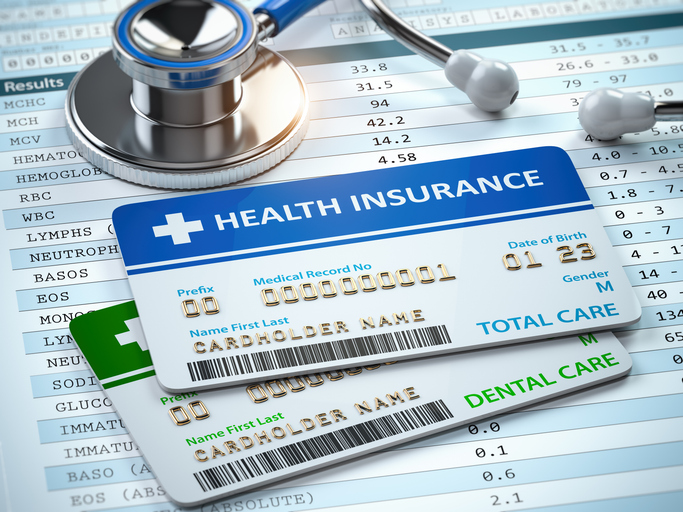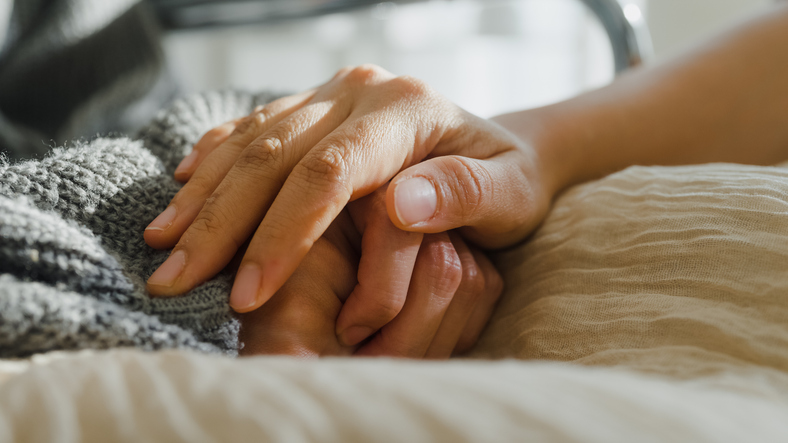Author: Gerry Acuna
What Happens If You Don’t Keep Your Insurance Info Updated?
November 19, 2025

Most of us buy insurance with good intentions. We sign the papers, file them away, and honestly, we don’t think much about them again. Life gets busy. Updating insurance info is the kind of task that quietly slips off the radar. But here’s the thing: life changes constantly, and your insurance doesn’t magically keep up.
If your policy stays the same while everything else in your life shifts around, you might end up with coverage that doesn’t match your situation anymore. And that usually shows up at the worst possible time.
Why Keeping Info Updated Actually Matters
Insurance companies depend on accurate details. They decide coverage and pricing based on the information you gave them at the start. If something meaningful changes and you don’t tell them, the policy may not reflect reality anymore.
Think about how often little changes happen: moving to a different place, adding someone new to the family, buying things you’d be upset to lose, fixing up your house, or even having changes at work. None of these moments seem “insurance-worthy” at the time, but they actually matter.
What Could Happen If Nothing Gets Updated
A lot of people assume that as long as premiums are paid, everything is fine. Unfortunately, insurance doesn’t exactly work that way.
1. Claims Might Not Go Smoothly
If something goes wrong and you file a claim, the insurer will check whether your information matches your real situation. If they find a big difference, the claim might get delayed, reduced, or rejected. For example, if your home is worth more because of renovations and you didn’t update the policy, the payout probably won’t cover the full damage.
2. You Might Not Have Enough Coverage
People often don’t realize their coverage is outdated until something happens. Maybe your family has grown, or you’ve bought more valuable items. A policy that once fit perfectly might not come close now.
3. The Policy Could Be Cancelled
Insurance companies expect major details to be accurate. If something important wasn’t updated, they can cancel the policy. In rare cases, they may even say it was never valid.
4. Renewal Might Become Expensive
Sometimes outdated details cause confusion during reviews. Even if the claim goes through, renewal might come with a higher price tag.
5. Stress Piles Up When You Least Want It
Insurance is supposed to offer relief during stressful times. Outdated information can turn that relief into more stress, more paperwork, more delays, and more frustration.
Things Worth Reviewing From Time to Time
It helps to check these once in a while:
- Where you live
- Changes in your family
- Any expensive new purchases
- Home improvements or upgrades
- Vehicle changes or new drivers
- Major health or job changes
- Beneficiaries
A simple yearly check is enough for most people.
Easy Ways to Keep Everything Updated
You don’t need to make this complicated. A few easy habits can help:
- Glance over your policies once a year.
- Whenever something big happens, just send a quick update.
- Keep all your insurance documents in one place so you don’t forget what you have.
- Make a short list of things that typically change over time.
- Ask the insurer when you’re unsure; they’re used to these questions.
Final Thoughts
Insurance is meant to support you when life gets tough, but it can only do that if the information behind the policy reflects your current situation. When details sit unchanged for too long, the coverage weakens and sometimes disappears when you need it most.
A few minutes of updating here and there can save you from a lot of trouble later. It doesn’t take much, but it makes a big difference when life throws something unexpected your way.
Coping After a Cancer Diagnosis: Finding Strength, Clarity, and Support
November 15, 2025

According to CDC data, nearly 39% of men and women will be diagnosed with cancer at some point during their lifetime. Finding out that you or a loved one has cancer can come as a shock and bring with it feelings of fear and anger. One challenge to treatment is that these emotions can make it difficult to process all of the information the doctor is presenting. Research shows that when emotions are high, a person’s decision-making ability is hindered, making it hard to choose a treatment plan.
Here are ways to help you cope after a cancer diagnosis, so that you can make the best decisions about your care.
Get the Facts
Gather as much information on your condition as you can. Not only will this help you make treatment decisions, but it can also feel empowering to become informed. Write down questions for your healthcare team as you think of them.
Questions to ask include:
- What kind of cancer do I have?
- Where is the cancer located?
- Has the cancer spread?
- Is this a curable form of cancer?
- What are my treatment options?
Bring a close family member or friend to your appointments for support and a second set of ears to help you remember what the doctors say.
Some people want all the facts while others want to let their healthcare providers make treatment decisions. Think about what works best for you before your appointments.
Be Honest About Your Well-Being
Now is the time to keep the lines of communication open between your doctors and loved ones. You may end up feeling alone if you sense that people are trying to protect you from your diagnosis, or if you try to be strong and hold in your feelings. Instead, be open and honest with everyone about your condition and what you’re feeling.
One in four individuals experiences depression and anxiety after a cancer diagnosis, so speaking up and seeking support early can make a meaningful difference.
“Education can be a powerful resource,” says Cynthia Brown, a breast cancer oncology nurse at Chester County Hospital in Pennsylvania. “Knowledge is power, and when you are more aware of the physical and mental symptoms you can experience throughout your cancer treatment, you can feel more confident in your ability to manage them, and be less afraid of the unknown.”
Accept Help When Offered
Let your loved ones help with errands, household tasks, meals, and taking you to appointments. It helps those you love to care for you and can be a way for them to cope during this difficult time.
To prevent those closest to you from burning out, accept help from anyone who asks if there’s anything they can do. Your loved ones will appreciate the extra help.
Some say that putting their lives in order helps them feel more in control of their well-being. Being involved in your treatment plan, keeping track of appointments, and making lifestyle changes are all things you can control.
While you can’t control every thought, you can choose which ones not to dwell on. Instead of worrying, for example, pay attention to the parts of life that bring you joy.
“As much as I’m in my own head thinking, ‘Cancer, cancer, cancer,’ and spiraling, my kids still have school pickup and drop-off, and they still want cuddle time,” says Stephanie Wysaski, a 35-year-old mother diagnosed with breast cancer. “I just didn’t have time to worry. Life doesn’t stop.”
Reevaluate Your Priorities
Receiving a cancer diagnosis can be a turning point in an individual’s life. Many people experience a new perspective and examine what they’ve been putting value on. Find more time for what matters most to you, and cancel everything that doesn’t align with your goals. Be open and honest with your loved ones about any changes you may be making and explain why.
Even when you don’t feel well, healthy lifestyle choices will constantly improve your energy level. Eating a nutritious diet, getting enough rest, and continuing to exercise as much as you can will help with the stress and fatigue that come with cancer and treatment. Setting a schedule and sticking to a routine helps manage daily exercise, getting enough sleep, and preparing healthy meals.
Expand Your Circle
It can be hard for people who don’t have cancer to understand precisely what you’re going through. That’s why talking to others in a similar situation can be so helpful. Cancer survivors can share their experiences and tell you what to expect during treatment.
You can try talking to someone you already know, like a friend or family member who has had cancer, or join a support group. To find a group, ask your healthcare provider or contact your local chapter of the American Cancer Society.
Care For Caregivers
The effect of a diagnosis can affect everyone in that person’s life, creating a ripple effect through families and communities. Seeking support through counseling or a caregiver support meeting can provide relief and guidance during a difficult time. Caregivers must take time for their own well-being and remember that it’s essential in caring for their loved one too.
“If someone in your life has been diagnosed with cancer, it’s okay to take time to process your feelings as well,” says Brown. “Those emotions are still important—even if the diagnosis isn’t yours. You may be worried for your loved one or angry about the disease. And if you are providing care for this person, you may experience feelings of stress or burnout.”
You may utilize Insureyouknow.org to organize your affairs, including finances, medical records, treatment, plans, and new schedules. Taking care of what you can control will eliminate unnecessary stress during treatment and recovery.
Moving Into a New Home? Important Documents to Update and Store
November 12, 2025

The day you move into a new home is always a blur. There are boxes everywhere, someone’s hunting for the screwdriver, and the Wi-Fi isn’t working yet. Between excitement and exhaustion, paperwork usually ends up in a pile somewhere, the “I’ll deal with it later” pile.
That pile matters more than it seems. Hidden inside are the documents that prove ownership, protect your investment, and make sure you’re covered if life throws a surprise your way. Spending even half an hour getting it sorted now can save weeks of hassle later.
Here’s an easy way to stay ahead of it all.
Step 1: Collect the Home Documents
Start with the basics: anything connected to the property itself.
The deed, the lease, closing papers, inspection reports, property taxes, the list’s not short, but every one of those pages has a job to do.
Keep them together. Snap photos or scan copies and upload them to a secure place such as InsureYouKnow.org. Paper can get lost, wet, or tossed out by mistake. A digital backup doesn’t.
Step 2: Update Every Insurance Policy
It’s easy to forget how many places your address lives: homeowners, renters, car, health, even life insurance. If you’ve moved, they all need an update.
A change of address sometimes shifts coverage or premiums. Check each policy, make sure everything looks right, and store a copy in your vault. When you actually need those papers, you won’t have to dig through drawers.
Step 3: Review Finances and Bills
Moving tends to scatter money trails. One bank has your old address, a credit card statement goes missing, and a subscription quietly keeps charging the wrong account.
Before things snowball, log in to each account, banks, credit cards, utilities, and loan providers, and double-check that your information’s current. Grab a recent statement or two and save them. Come tax season, you’ll be glad you did.
Step 4: Fix the ID and Legal Stuff
This is the least exciting part, but it matters. Out-of-date identification can make the simplest tasks harder.
Head to the DMV, update your license, change your voter registration, and check your vehicle paperwork. If you’ve moved to a different state, renew your passport details too. Take a quick photo of each ID and tuck it safely into your digital folder, one less worry if a wallet ever goes missing.
Step 5: Round Up Family and Pet Records
Families (and pets) come with paperwork of their own: school transcripts, vaccination cards, medical histories, and adoption or license documents.
Put them all in one place. Upload copies so you can reach them instantly when someone needs a school form or a vet asks for proof of shots. It’s one of those tiny habits that saves time again and again.
Step 6: Check Estate and Emergency Documents
A new home changes the big picture. If you own more now than before, or live in a different state, some legal documents might need attention.
Look at your will, trust, and power of attorney. Make sure beneficiaries are still correct and that addresses match. Upload those to your vault and share access only with the people you absolutely trust. That small act can spare family members confusion later.
Step 7: Why Digital Storage Beats a Drawer of Folders
Paper doesn’t last forever. It fades, tears, and somehow always disappears when you’re in a hurry. Digital storage, especially a secure platform like InsureYouKnow.org, keeps everything in one spot, encrypted and easy to reach from anywhere.
You can label folders, set reminders for renewals, and grant limited access to family or advisors. It turns chaos into order, quietly, efficiently, without any stress.
A Quick Reality Check
Moving is a mix of energy, emotion, and endless details. Once the boxes are gone and the house starts to feel like home, take an hour, grab that pile of paperwork, and go through it.
Scan, upload, label, done. Then forget about it for a while.
It’s not the glamorous side of homeownership, but it’s the one that keeps everything running smoothly. A little organization now means fewer surprises later, and that’s worth more than any new piece of furniture.
How to Choose a Medical Power of Attorney and Stay Prepared
November 6, 2025

A few years ago, a close friend of mine went through something that completely changed how I look at “being prepared.” Her dad had a stroke while working in the garden. One minute he was watering plants, the next, he was in the hospital, unable to speak. The doctors were asking who could make medical decisions for him, but no one had an answer. Everyone froze.
It was heartbreaking to watch. Her mom was in shock, her siblings were arguing, and everyone was scared. Nobody knew what he would have wanted.
That day taught me something that I’ll never forget. Planning ahead isn’t just about being responsible. It’s an act of love. And that’s exactly what a Medical Power of Attorney is all about.
What a Medical Power of Attorney Really Means
A Medical Power of Attorney (MPOA) sounds like a complicated legal thing, but it’s actually simple. It’s a document that lets you choose someone you trust to make healthcare decisions if you can’t.
That person, your agent, doesn’t suddenly take over your life. They only step in if you can’t speak for yourself. Their role is to protect your wishes and make sure what you want actually happens.
It’s one of those things we tend to put off, but once it’s done, it brings a quiet kind of comfort. You know things will be okay, even if you can’t explain what you want in the moment.
Why It Matters
If you don’t have a Medical Power of Attorney, hospitals usually turn to whoever’s nearby or follow state laws about next of kin. That can work, but it can also cause a lot of tension. In stressful moments, people don’t always think clearly. They guess, they argue, they panic.
Having an MPOA avoids all that. It gives doctors one clear person to speak with and gives your family direction when things feel uncertain. It’s a simple form, but it can prevent a lot of heartache later.
How to Choose the Right Person
Choosing your agent isn’t about who’s closest to you. It’s about who knows you best. The person you trust most doesn’t have to be family. It could be a friend, a sibling, or someone who simply understands you.
Here’s what to think about:
- Who stays calm under pressure?
- Who knows how you feel about medical care and quality of life?
- Who will listen to doctors carefully and ask good questions?
- Who will do what you want, even if others disagree?
Once you decide, talk to them. It doesn’t need to be formal or serious. Maybe just bring it up during a car ride or while cooking dinner. Tell them how you feel about certain treatments or what kind of care you’d want. These honest conversations matter so much more than any form.
Keeping Your Documents in Order
Once your form is signed, keep it somewhere easy to find. In an emergency, no one wants to dig through stacks of paper.
Here’s what to keep together:
- Your MPOA form (signed and dated).
- A Living Will or Advance Directive describing your medical preferences.
- A HIPAA release form so your agent can speak with doctors.
- Health insurance cards and policy info.
- Emergency contacts for family and doctors.
- Photo IDs for you and your agent.
I like to keep mine in a labeled folder at home and another copy saved online. It’s one of those “just in case” things that saves everyone stress later.
Why Digital Storage Helps
Paper gets lost. It gets packed in a box or tossed by accident. That’s why having a digital copy is smart.
A secure site like InsureYouKnow.org makes it easy to upload and store important documents safely. You can label them, share access with your agent, and know that if you ever need them, they’re right there. It’s simple, private, and safe.
It’s not about being tech savvy, it’s about being practical.
Keep It Updated
Life changes. People move, relationships shift, new doctors come into your life. Once a year, take five or ten minutes to check that your MPOA and other forms are still up to date.
It doesn’t take long, but it gives you peace of mind that everything’s current.
A Final Thought
Setting up a Medical Power of Attorney isn’t about expecting bad things to happen. It’s about kindness, for yourself and the people who love you.
Once it’s done, you can stop worrying. You’ll know that, no matter what happens, your family won’t be left guessing. They’ll already know because you cared enough to prepare.
It’s not just a document. It’s peace of mind, and maybe one of the most loving things you can do.
Updating Insurance and Documents During Major Life Changes
October 30, 2025

Life Keeps Moving
A new job, a move overseas, or the day someone finally retires all sound exciting. In the middle of packing boxes or filling out onboarding forms, it’s easy to forget the quieter side of change: the policies, records, and bits of paperwork that keep daily life running smoothly.
Missing an update here can cause small but annoying problems later. A wrong address on an insurance file, an expired policy, or a forgotten beneficiary can slow down a claim when it’s really needed
When Work Life Shifts
A new role often means new benefits, different coverage, and sometimes a short gap between plans. People tend to assume everything carries over automatically, but that’s rarely the case.
- Before leaving a company, check the exact date the old health plan ends.
- Ask the new employer when coverage begins; if there’s a gap, arrange a temporary plan.
- Look at personal policies to be sure the coverage amount still fits current income and family needs.
- Update names, addresses, and phone numbers across all accounts.
- Keep the older paperwork since it’s proof if a claim from that period ever comes up.
It’s a small chore during a busy week, but it prevents confusion later.
When a Move Crosses Borders
Relocating brings excitement, but every country plays by its own rules when it comes to insurance and legal documents. A policy that worked perfectly at home might be useless once abroad.
Before boarding the plane:
- Ask the insurer about international coverage and buy a global or expat plan if necessary.
- Re-draft wills or powers of attorney so they follow local laws.
- Tell banks and pension providers the new address since some freeze accounts if mail bounces back.
- Store digital copies of important papers in a secure online vault and let one trusted person know how to reach them in an emergency.
It takes a few emails and signatures, but it can save a lot of time and stress once the move is complete.
When Retirement Begins
Retirement changes how income and coverage work. Employer insurance usually ends, and new health options need to be arranged.
- Compare health plans designed for retirees or seniors.
- Review life insurance since sometimes a smaller policy makes more sense now.
- Gather pension statements and investment reports in one folder.
- Make sure wills and executors’ details are up to date.
- Keep digital and printed copies in one clearly labeled place.
A tidy file today makes life much easier tomorrow for both the retiree and their family.
Quick Review Checklist
A few questions worth asking after any big change:
- Does current insurance still cover what’s needed?
- Are beneficiaries correct and easy to contact?
- Are legal and financial papers current?
- Is everything backed up securely?
- Has someone trustworthy been told how to access it?
If each answer is yes, everything is already in good shape.
Keeping It All Together
Loose papers and forgotten folders can turn into a real headache. A secure digital vault, such as InsureYouKnow, keeps all records in one encrypted space that can be opened from anywhere. It’s simple, private, and designed for moments exactly like these: job changes, relocations, and retirements.
Final Thoughts
Big life transitions come with excitement and responsibility. Updating insurance and personal documents may not feel urgent, but it protects the plans built over years of effort. With organized records and the right digital tools, the next chapter, wherever it leads, starts off clear and worry-free.
Seasonal Insurance Check-Up: Keep Your Coverage Up to Date
October 29, 2025

If you’ve ever opened an old folder and thought, “Wait, when did I even file this?”, you already get the point. Insurance paperwork has a way of sitting quietly until life outgrows it. People check their policies once a year, feel responsible for a minute, then forget about them. Sounds familiar, right?
Life, though, doesn’t wait. A new job pops up, someone moves, a baby arrives, or maybe there’s a home remodel that changes everything. Those small shifts can make old coverage feel out of step. By the next annual review, it’s easy to realize things don’t quite fit anymore.
Life Changes Faster Than Paperwork
Insurance is supposed to protect what matters now, not what mattered last spring. But most people never notice how fast their details drift. Maybe the car value has dropped, or a phone number changed, or the policy still lists an address that no one lives at. Tiny errors, but they matter when a claim appears.
A quick seasonal review keeps things real. It’s like glancing at your pantry before heading to the store, fast, practical, and you avoid buying what you already have.
How to Do a Seasonal Review Without Losing a Weekend
Step 1. Gather your stuff.
Pull together every policy: car, home, health, life. Keep them in one folder, digital or paper, so you’re not hunting later.
Step 2. Check the basics.
Look at names, addresses, contact numbers, and nominee info. If something looks off, fix it.
Step 3. Match it to real life.
Bought something big? Changed jobs? Maybe started freelancing? Adjust the coverage so it actually fits.
Step 4. Note payments and renewals.
Set a quick reminder on your phone. Late payments sneak up quietly.
Step 5. Keep copies safe.
A cloud folder and one printed set usually do the trick. Tell someone close where they are.
When to Check Even Sooner
Some moments don’t wait for the next season. Big life changes mean the file needs a look right away:
- Marriage or separation
- New house or sold property
- Moving cities
- Starting a business
- A new baby or dependent parent
If your life just shifted, your coverage should shift too.
Why Bother?
People who do this regularly sound calmer when things go wrong. They don’t waste time searching or wondering what’s covered. The habit keeps surprises small.
Here’s what they get out of it:
- Current coverage: Nothing outdated hiding in fine print.
- Fewer claim issues: Information is already right.
- Possible savings: You catch overlaps before paying twice.
- Less stress: Everyone knows where everything lives.
A little check four times a year adds up to peace of mind.
Make It Stick
Pick a date that already matters, your birthday month, tax season, the start of summer. Mark it as “insurance check-up” and actually do it. Once or twice and it’ll feel automatic.
The Bottom Line
Insurance only works when it keeps up with your life. A seasonal check-up isn’t overkill; it’s common sense. Fifteen minutes now can save weeks of frustration later, and that’s a trade anyone would take.
ACA Marketplace: Understanding the Upcoming Insurance Hikes
October 28, 2025

Imagine logging in to renew your health-insurance plan this November and discovering your monthly premium has nearly doubled — all because Congress couldn’t agree to fund the tax credits that have quietly kept your coverage affordable. That’s the stark reality for millions of Americans enrolled in the health insurance marketplaces under the Affordable Care Act (ACA).
Under the ACA, individuals and families who do not get health insurance from an employer or through a public program can shop at a federal or state-based “Marketplace.” Insurers offer plans in metal tiers (Bronze, Silver, Gold)—with varying premiums, deductibles, and out-of-pocket costs. What keeps many of these plans affordable is the federal premium tax credit. If you qualify (mainly based on income as a share of the federal poverty level), you receive a subsidy that reduces the monthly premium you pay.
Because of this subsidy, many enrollees pay only a modest portion of what might otherwise cost thousands of dollars. The Kaiser Family Foundation (KFF) found that thanks to the enhanced tax credits, an individual making $28,000 “will pay no more than around 1 % ($325) of their annual income towards a benchmark plan.” The system ties a person’s share of premium costs to their income, and the subsidy covers the rest. This critical safeguard has kept coverage within reach for millions of lower-income Americans.
Why Subsidies Are in Danger of Expiring
The wrinkle: the enhanced subsidies many people now rely on are temporary unless Congress renews them. These enhancements were introduced by the American Rescue Plan Act in 2021 and extended under the Inflation Reduction Act of 2022. They expanded eligibility (including households earning more than 400% of the poverty level) and reduced out-of-pocket costs for individuals. But unless renewed by year’s end, they sunset at the end of 2025.
Even more urgent: insurers are already filing their proposed 2026 premiums, assuming no renewal of the enhanced tax credits. KFF reported that enrollee net premium payments could increase by 114 % on average—from about $888 in 2025 to about $1,904 in 2026—if the enhanced credits expire.
What People with Low Income Will Face
For low- and moderate-income Americans who depend on the marketplaces, the expiration of enhanced subsidies is more than theoretical—it’s a budget-breaker.
If subsidies are eliminated, many enrollees will see their monthly premium contributions skyrocket. KFF’s analysis shows that without the enhanced tax credits, average annual premium payments for subsidized enrollees would more than double. Some households will lose eligibility altogether. For people earning above 400 % of the poverty level, that subsidy cliff means they go from some assistance to none. KFF explains that “people with incomes over four times the poverty level will no longer be eligible for any financial assistance” if the enhanced credits expire.
The rate increases compound the effect: insurers are proposing median premium hikes of around 18 % for 2026. Those who are already barely making ends meet may find the new premiums impossible. One enrollee in Florida told Health News Florida that she’s already struggling to cover other rising costs. “The rent is going up. The water bill is going up,” said the Florida resident. “I cannot afford a premium hike.”
A missing subsidy cushion means not just higher premiums but a greater risk of losing coverage altogether. As Jason Levitis, Senior Fellow at the Urban Institute, explained, “If you have fewer subsidies, you’re going to have less health coverage and less health care.”
Why Enrollment Has Grown Recently
Enrollment in the marketplaces has surged in recent years, and the subsidy enhancements are a significant reason. Before the enhancement period, around 11 million people used the marketplace; now more than 24 million are enrolled.
Several factors have driven the growth. The enhanced tax credits increased eligibility and lowered what many paid, making coverage far more accessible. Improved outreach and usability—especially as state-based marketplaces matured—helped consumers find and keep plans more easily. At the same time, rising costs in employer-based coverage pushed more people to shop for plans individually. According to KFF, the enhancements cut annual premium payments by an estimated 44 % (about $705) for many subsidized enrollees. “The enhancements made it easier for millions of people to afford health coverage,” said Larry Levitt, Executive Vice President for Health Policy at KFF. “If they expire, we could see those gains wiped out almost overnight.”
In short, more help meant more people using the marketplace. The flip side is that less help could mean fewer people—and higher premiums for those who stay.
What’s at Stake
At the core of the current federal budget impasse (which led to the shutdown beginning October 1, 2025) is a fight over whether to extend the enhanced subsidies. Democrats insist that any funding deal must include the subsidy extension, arguing that letting them expire would cause a major affordability crisis. Republicans are pushing for reopening the government without tying the subsidy question directly to the budget deal, saying the issue should be negotiated separately.
From a consumer standpoint, the stakes are enormous. Without subsidy extensions, millions may lose assistance, face steep premium increases, or drop coverage altogether. KFF’s district-level data show that premiums would at least double in many parts of the country if the enhancements are not renewed. Rising premiums could also cause healthier enrollees to opt out, worsening the insurance risk pool and pushing rates even higher in subsequent years.
For families already squeezed by inflation and rising living costs, this would trigger an affordability crisis. “The cost of health insurance is never going to be low enough for a person who makes just above poverty to be able to afford it,” said Cynthia Cox, Director of KFF’s Program on the Affordable Care Act. “If you want that person to have health insurance, then there needs to be financial assistance.”
If Congress doesn’t act, many Americans will pay far more—or lose coverage altogether. As open enrollment begins, millions will face difficult choices about whether they can keep the coverage that has protected them for years, and whether Washington will act before the bills come due.
Insure You Know
Before you finalize your renewal or new plan selection, it may help to check out Insure You Know — a secure, central place where you can store and manage the critical information your family will need (insurance details, plan documents, contact numbers, and more). Taking a few minutes now to upload your coverage information ensures you’re ready for whatever changes lie ahead, and helps keep everything organized so you’re not scrambling when the numbers on your bill jump or the policy rules shift.
Love in the Final Chapter: Caring for a Loved One in Home Hospice
October 15, 2025

When it comes to end-of-life care, 71% of Americans believe the goal should be to help people die without pain, discomfort, and stress. The focus of hospice care is on quality of life and symptom management, and it is designed to provide comfort to individuals with a life expectancy of six months or less.
A team of medical professionals addresses the patient’s physical, psychological, and spiritual needs on a case-by-case basis, ensuring that every patient receives a care plan tailored to their specific needs. Care is most often delivered in the patient’s home, and the hospice team can support caregivers during this process.
Quality is Key
Hospice is end-of-life care, but that doesn’t mean someone receiving care will pass right away. While doctors recommend hospice when a patient only has six months or less to live and is no longer responding to curative treatments, many patients live longer. In such cases, what matters still is a patient’s quality of life, not quantity.
“Each person’s journey at the end of life is different,” says Jessica Kelly, a licensed hospice nurse in New York. “We tailor our care to meet those unique needs, whether that’s managing pain, supporting emotional well-being, or helping families share meaningful moments together.”
Home Care Takes a Toll
While it is nearly everyone’s preference to pass away in the comfort of their own home, the task of caregiving can be more than loved ones expect. “I do think that when patients are at home, they are in a peaceful environment,” says Parul Goyal, a palliative care physician. “It is comfortable for them. But it may not be comfortable for family members watching them take their last breath.”
The burden put on loved ones, especially spouses, can cause caregiver syndrome, which is characterized by the stress and burnout that comes from providing constant care to someone who is chronically or terminally ill.
“Our long-term-care system in this country is really using families, unpaid family members,” says Katherine Ornstein, a professor of geriatrics and palliative medicine at Mount Sinai. “What we really need to do is to broaden the support that individuals and families can have as they’re caring for individuals throughout the course of serious illness.”
Self-Care for Caregivers
Providing care to a hospice patient can be both rewarding and difficult. Social psychology researchers Richard Schulz and Joan Monin found that caregivers suffer when they witness their loved one’s suffering without feeling like they can remedy it. It becomes important not just to care for the patient but for caregivers to care for themselves as well.
One way to start accepting a terminal diagnosis is to begin getting a loved one’s affairs in order. It can be helpful to collect necessary documents and passwords and to begin sorting through possessions. Staying busy during the care process can help manage emotions as they arise.
Handling Grief
It’s easy to get paperwork and belongings in order. It’s not as easy to manage your grief. The loss of a loved one is among life‘s most significant stressors. Grief can affect every aspect of your health. While everyone’s experience is different, it is common to feel intense emotions during a loved one’s illness and after losing them.
Here are ways caregivers can take care after loss:
- Express your emotions. Bottling them up will only intensify them.
- Don’t put yourself on a timeline. People move forward at their own pace. Trust that your pain will lessen over time.
- Take care of yourself as you grieve. Eat nourishing meals, stay hydrated, and sleep enough.
- When you’re ready, exercise. It can reduce stress, tension, and sadness.
- Hospice providers make grief support groups available to anyone who has lost a loved one in hospice care.
- The Hospice Foundation also offers a newsletter to help during bereavement.
When to Seek Help
Most people find a way to adjust to their loss, but it is a painful and uncomfortable process. About 10% to 15% of people who are grieving have a complicated reaction to their loss. Grief experts agree that if grief is unmanageable, meaning someone has not returned to their pre-loss level of functioning within six to 12 months, it may be time to seek the professional help of a grief counselor. Your hospice team can help you find the care you need.
Handling a loved one’s affairs is one way caregivers can manage their grief. With Insureyouknow.org, you may organize financial documents, property records, and other documentation of personal effects. Getting everything in order can bring you some peace of mind during emotionally challenging times.
Term vs Whole Life Insurance: Simple Guide for Smart Choices

Why Life Insurance Matters
Life insurance is really about looking after the people who depend on you. It is not just a form to fill out or another bill to pay. Imagine suddenly not being there. The bills do not stop, school fees still need paying, loans keep coming. Life insurance helps make sure your family is not left scrambling.
Choosing the right type can feel confusing at first. Term life, whole life. The names almost sound the same, right? But they work very differently. Understanding each one can save a lot of money and prevent unnecessary stress later.
Many young people think, “I’m fine for now, I’ll deal with it later.” It makes sense to think that way, but starting early usually keeps premiums lower and makes managing everything much simpler. It might not be exciting to think about, but it is practical and that is what counts in the long run.
Term Life Insurance: Affordable and Straightforward
Term life insurance is actually pretty simple once you get the hang of it. It covers someone for a set number of years, maybe 10, 20, or 30. During that time, premiums are paid. If something happens to the insured, the family gets the payout. If nothing happens, the policy just ends. That’s really it, nothing more complicated than that.
You can kind of think of it like renting protection. It’s really useful when life gets busy and responsibilities are piling up, paying off a home, taking care of kids, or managing loans.
For instance, imagine a 30-year-old buying a 25-year term policy worth ₹1 crore. The annual premium could be around ₹10,000. If something happens during that time, the family gets ₹1 crore. If nothing happens, the coverage stops. No frills, no fuss. Simple, affordable, and gives peace of mind exactly when it’s needed.
Whole Life Insurance: Protection That Lasts
Whole life insurance is actually a bit different from term insurance. So, it covers someone for their whole life, usually up to age 99 or 100, as long as the premiums are being paid. Part of what you pay goes into a cash value account, and over time, that grows slowly. And here’s the thing, you can borrow from it, take some money out if you need to, or even use it to pay future premiums.
This kind of policy is really good for people who want coverage that lasts their entire life or are thinking about leaving some money for their family later on.
For example, imagine a 30-year-old picking a whole life policy worth ₹1 crore. The annual premium could be about ₹60,000. Over the years, the cash value grows little by little, and whenever the insured passes away, the payout is guaranteed. Yeah, it costs more than term insurance, but it gives security for life and a bit of extra flexibility if something comes up.
Understanding the Key Differences
Here’s the thing, term insurance and whole life insurance aren’t exactly the same, even though people often mix them up. Term insurance is temporary and usually cheaper, kind of like renting a flat. Whole life insurance lasts your whole life and costs more, a bit like buying a house that also builds value over time.
The big difference is in how they work. Term insurance mostly just gives protection. Whole life insurance gives protection plus a bit of savings. Term is good for short-term stuff, like paying off a home loan or taking care of kids until they’re grown. Whole life insurance makes more sense if someone wants coverage for life or wants to leave some money for their family later on.
Why Term Insurance Appeals
Term insurance is attractive because it’s cheap, straightforward, and offers high coverage. Some policies allow conversion to permanent insurance if circumstances change.
The downside is obvious: coverage ends after the term, renewals can be costly, and there is no cash value to access.
Why Whole Life Insurance Appeals
Well, whole life insurance is something people usually pick if they want coverage that lasts their whole life. You get a guaranteed payout, and part of what you pay slowly builds cash value. It can also help with long-term stuff, like leaving money for your family or passing on wealth.
Here’s the thing though, it’s not all simple. The premiums are higher, and the cash value doesn’t grow very fast compared to other ways of investing. And some of these policies can get a little tricky, so it really helps to read the fine print and make sure it works for you.
How to Choose the Right Option
So here’s the thing, picking between term and whole life insurance really depends on your own situation. Term insurance is usually good for young families, people with temporary money responsibilities, or anyone who wants higher coverage without spending too much. Whole life insurance makes more sense if you can handle higher premiums and want protection for your whole life, along with a little savings built in.
Basically, term insurance is all about protection. Whole life insurance is protection plus a small financial cushion. It’s not complicated, but it helps to think about what actually fits your life, your budget, and your family’s needs.
A Practical Strategy
Here’s the thing, some families like to mix things up a bit. They go for term insurance to get the protection and then put the extra money they would have spent on a whole life policy into other investments. Over time, those investments can grow quite a bit while still keeping the family covered.
For example, if someone saves about ₹50,000 every year by choosing term insurance and invests it wisely, that could turn into a decent fund in 25 years. This way, the family gets immediate protection and some long-term growth too. It’s kind of a smart balance if you can plan it right.
Conclusion
Well, term life and whole life insurance do kind of different things, you know. Term insurance works if someone just wants coverage for a certain time and doesn’t want to spend too much. Whole life insurance is more for people who want coverage for their whole life and maybe a little savings along the way.
Here’s the thing, it really helps to think about your family, your money, and what your long-term goals are. Picking the right policy can give some peace of mind and make sure your loved ones are taken care of when it really matters.
From “Promise to Pay” to “Promise to Help – The New Direction of Insurance
October 9, 2025

Insurance used to be pretty straightforward. Something went wrong, a claim was filed, and the company paid out. It was businesslike, dependable, but distant, a transaction built on the idea that help came only after things fell apart.
That mindset is slowly disappearing. Modern insurers are moving from a simple promise to pay toward something broader, a promise to help. It’s a quiet shift, but a powerful one. Instead of showing up after the storm, insurance is learning how to stand beside people before it hits.
What’s Changing and Why
A few years ago, the idea of an insurer sending out real-time alerts or helping clients avoid accidents might have sounded ambitious. Now it is becoming normal. Several forces are pushing this transformation forward.
Customer expectations have changed.
People want services that respond in the moment, not days later. They want their insurer to feel like a partner, not a policy. If their fitness app can track every heartbeat, they wonder why their insurer cannot send a simple safety reminder when a major storm is on the way.
Technology made prevention possible.
Connected homes, smart cars, and wearable tech give insurers tools to spot problems before they happen. It is no longer just about predicting who might file a claim, it is about helping them avoid needing one.
Competition sparked a rethink.
Digital-first insurers, often smaller but more agile, have proven how personal and convenient insurance can be. Established companies are learning to adapt, realizing that loyalty now comes from service, not slogans.
Trust is back in the spotlight.
In truth, insurance has always depended on trust. But trust today is earned differently, not just by paying out quickly, but by showing up early, being transparent, and actually making life a bit safer.
How the “Promise to Help” Looks in Practice
It is easy to forget that most people do not want to think about insurance at all. The “promise to help” changes that by offering useful touchpoints that matter in everyday life.
- Sending storm or flood alerts before damage happens.
- Helping drivers plan safer routes or spot maintenance issues.
- Offering healthy-living rewards that lower costs and build good habits.
- Providing quick repair or recovery options instead of endless paperwork.
- Checking in after an event, not with forms, but with guidance and reassurance.
It is still insurance, but it feels different, more human, more present.
Challenges on the Way
No big change comes without friction. Some insurers still struggle with old systems that do not talk to each other. Others are cautious about how much personal data they collect, and rightly so. Privacy is not just a legal issue, it is emotional.
There is also the challenge of tone. Helping customers without seeming intrusive takes care and empathy. A message that is meant to be helpful can easily feel like surveillance if it is poorly timed or worded.
But the companies that get this balance right are setting a new standard. They are showing that care and commerce can actually coexist.
What This Means for Policyholders
For policyholders, this new direction means fewer surprises and better peace of mind. Instead of being left on their own until something breaks, customers now get small but meaningful touches of support along the way.
They see their insurer less as a faceless institution and more as a partner in protection, a brand that does not just cover life’s troubles but helps prevent them. That sense of security, before and after a crisis, is what builds lasting trust.
How Insurers Can Keep the Promise
To make the shift sustainable, insurers will need to do more than upgrade technology. They will have to reshape how they think about service itself.
- Focus on listening. Every great service begins with understanding real needs.
- Keep technology human. Data is helpful, but empathy is irreplaceable.
- Be transparent. People should always know how and why their data is used.
- Work together. Partnerships with health, home, and repair services make help more real.
- Deliver small wins. A helpful reminder or quick response builds more loyalty than a billboard ever could.
These small, consistent actions turn a new promise into a lived experience.
A More Human Kind of Protection
The shift from a “promise to pay” to a “promise to help” is not just clever branding, it is a sign of maturity in the industry. Insurance is finding its way back to what it was meant to be: a source of reassurance in uncertain times.
When help arrives before the loss, customers notice. When it comes with understanding instead of fine print, they remember. That is how insurance stops being something people tolerate and starts becoming something they genuinely trust.
And maybe that is the kind of promise worth keeping.
